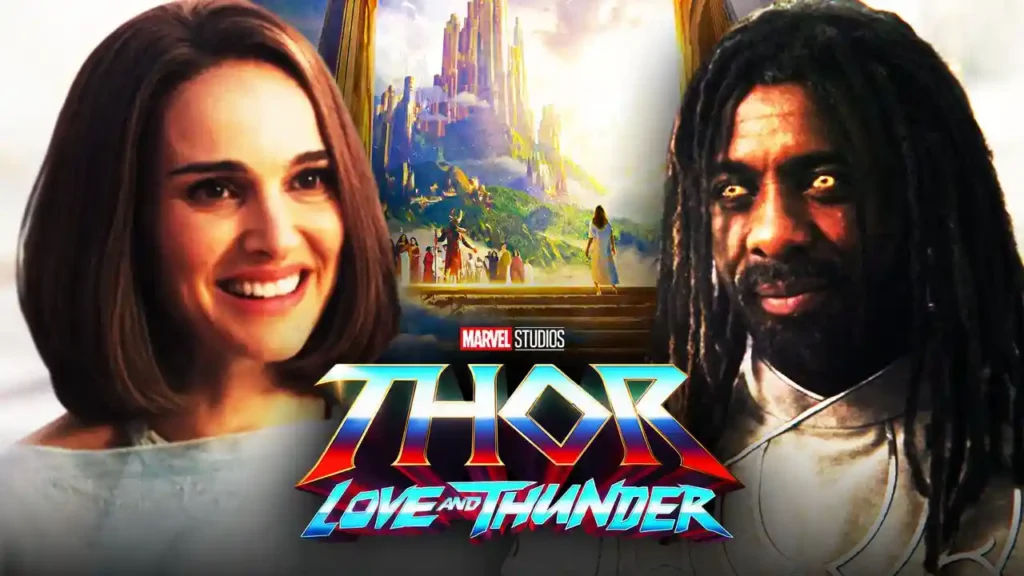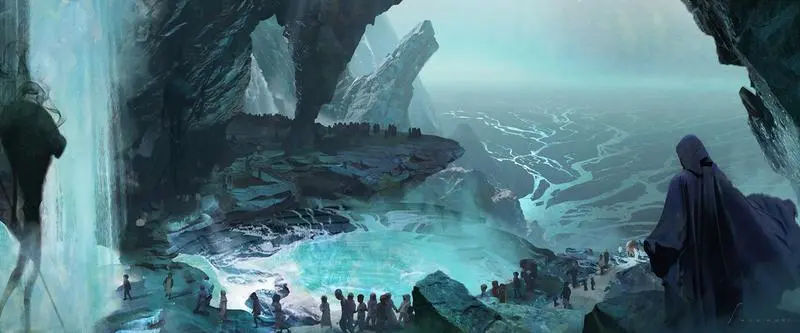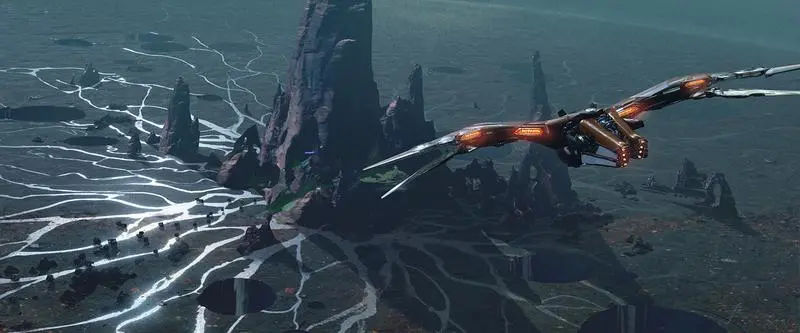
Jane Foster: Is she really gone? After watching the post-credit scene in Taika Waitit’s Thor: Love and Thunder, many people are wondering that. After losing the fight against the fearsome Gorr the God Butcher, Natalie Portman’s astrophysicist-turned-Asgardian was seen being hailed by Idris Elba’s Heimdall at the gleaming white gates of Valhalla.
Many people left the theatre in amazement after seeing the post-credit stinger and wondered if this was the final time they would see the Mighty Thor in the world of the living. Elba responded to that topic by saying that in the “ever-expanding” Marvel universe, “you simply never know.”

But did the creators of Love and Thunder always have this image of Valhalla in mind while they were making the film? Well, it seems not.
A Different View of Valhalla in Thor: Love and Thunder
Valhalla appeared to be far more elaborate in this idea, which Marvel Studios artist Sung Choi provided, than it did in the film’s post-credit stinger.

This concept, shared by Marvel Studios artist Sung Choi, featured a Valhalla that looked far more ornate than what was actually depicted in Love and Thunder’s post-credit stinger.

In contrast to what fans finally received, this depiction of Asgard’s afterlife resembled the elven cities of The Lord of the Rings or the classic Asgard featured in the first three Thor movies.

Other concept art depicted the Well of Eternity, which is shown in the movie’s conclusion and depicts an actual Well encircled by a mountainous landscape.

Instead of the limitless body of water that ultimately made it into the movie, the Well is depicted here as a little pool of blue water.

The Guardians of the Galaxy crew never appeared in the Thor sequel’s Well of Eternity, but in the final shot, their ship, the Benatar, appears to be floating there.

Love and Thunder is getting a new coat of paint
Some fans may be asking what the heck happened to these various shots from the Love and Thunder locations after seeing these photographs. Since they are just notions, things like this frequently occur.
Filmmakers may create concept art with no intention of including that particular scene in the finished product in order to demonstrate a particular tone. And for a number of these, especially the one with the Benatar, it is probably the case.
The Valhalla rendering, however, feels distinct. It is sufficiently similar to the location’s representation in the movie, albeit on a larger scale. Perhaps the idea was to have the afterlife resemble the notion shown above, but the manufacturing pipeline’s logistical requirements prevented this from happening.
One must keep in mind that building a backdrop like Valhalla (or any of the other MCU locations) takes numerous VFX hours. And with the ongoing COVID pandemic and the continued strain on the VFX pipeline, Marvel may have decided to reduce the scope as a result of these underlying factors.
Thor: Love and Thunder is now streaming on Disney+

